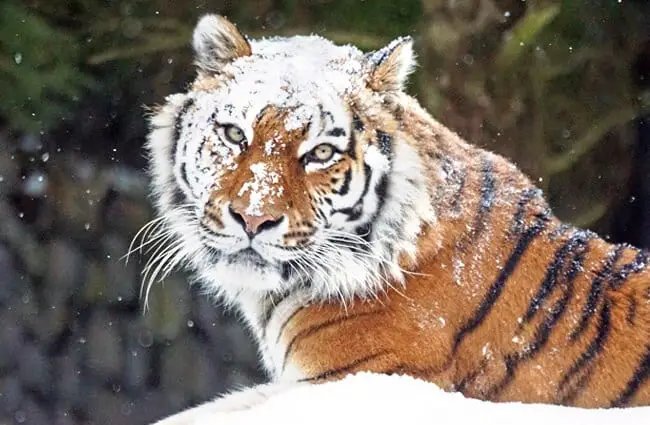
To put it simply, the Siberian tiger is indeed endangered, and their survival hangs in a delicate balance. Much like a tightrope walker, one misstep could lead to their downfall. The world of conservation is vast and complex, filled with various threats and strategies aimed at protecting not just tigers but entire ecosystems. Let’s dive into what makes the Siberian tiger so special and why their plight deserves our attention.
The Siberian Tiger: An Overview
The Siberian tiger, also known as the Amur tiger, is the largest cat species in the world. These magnificent animals can weigh up to 600 pounds and grow more than 10 feet long, including their tail. They’re known for their thick fur coats, which help them survive in the frigid temperatures of their habitat in the Russian Far East and parts of China.
But what sets them apart isn’t just their size. Siberian tigers are solitary creatures, roaming vast territories in search of prey. Unlike lions, which tend to live in prides, these big cats manage their lives alone, relying solely on their instincts and stealth. Picture a skilled hunter stalking its prey through the snow-covered landscape—this is the Siberian tiger in its element.
Why Are Siberian Tigers Endangered?
You might be surprised to learn that Siberian tigers face several threats that have led to their endangered status. Habitat loss is the biggest culprit, as forests are cut down for agriculture and urban development. Imagine breaking down your favorite natural playground to build a shopping mall; that’s what’s happening to their home!
Additionally, poaching has severely impacted their population. Tigers are hunted for their beautiful fur, bones, and other body parts, which are sold on the black market. It’s disheartening, isn’t it? These cats are not just animals; they play a critical role in their ecosystem, helping to maintain the balance that keeps everything functioning smoothly.
Conservation Efforts in Action
Fortunately, there are many organizations and individuals working tirelessly to save the Siberian tiger. Conservation programs aim to protect their habitats and ensure their survival. For instance, some areas have been designated as protected reserves, where hunting and logging are strictly controlled. This gives tigers a refuge from the dangers of poaching and habitat loss.
One notable effort is the Tiger Recovery Program, which focuses on increasing tiger populations through various strategies. This includes anti-poaching patrols, public awareness campaigns, and habitat restoration projects. These initiatives remind us that conservation isn’t just a one-time effort; it’s a continuous commitment to safeguarding these incredible creatures for future generations.
The Role of Local Communities
Another vital aspect of conserving the Siberian tiger involves the local communities living near their habitats. You might not realize how significant this is, but these communities can play a big role in protecting these animals. Programs that engage locals in conservation efforts can create a sense of ownership and responsibility toward wildlife.
For example, educating residents on the importance of tigers in maintaining biodiversity can lead to positive changes in behavior. When locals understand that having a thriving tiger population benefits the environment—and even their livelihoods—they’re more likely to support conservation initiatives. This is where community involvement and conservation make a perfect match.
Success Stories and Challenges Ahead
Despite the struggles, there have been success stories in the fight to save the Siberian tiger. Thanks to sustained conservation efforts, the population has shown signs of recovery. Recent estimates suggest that there are now around 500 Siberian tigers in the wild, a significant improvement from just a few decades ago.
However, challenges remain. Climate change is a looming threat that could disrupt their habitat and prey availability. Moreover, as human populations continue to grow, the pressure on these tigers and their environment increases. It’s a continuous battle that requires vigilance and commitment from all of us.
How You Can Help
You don’t have to be a wildlife biologist to make a difference. In fact, there are several simple ways you can contribute to the conservation of the Siberian tiger. Here are some ideas:
- Educate Yourself: Learn about Siberian tigers and the challenges they face. The more informed you are, the better you can advocate for their protection.
- Support Conservation Organizations: Donate to or volunteer with groups that work to protect tigers and their habitats.
- Spread the Word: Share what you learn with friends and family. Awareness is a powerful tool in conservation.
Every little bit helps, and raising awareness is often the first step toward meaningful change.
The Future of Siberian Tigers
The future of the Siberian tiger is not set in stone. With the right efforts, *we can help ensure these magnificent creatures remain a part of our world*. While challenges are inevitable, the combined strength of conservation initiatives and community involvement offers hope.
So, when you think about Siberian tigers, remember they’re more than just beautiful animals; they’re a vital part of our planet’s ecosystem. As we advocate for their protection, we also become champions of nature. Supporting the conservation of the Siberian tiger is not just about saving one species; it’s about preserving the richness of life on Earth.
The journey ahead may be difficult, but it’s one we can take together. Let’s keep our eyes on the prize and work towards a future where Siberian tigers roam free—majestic and thriving.

